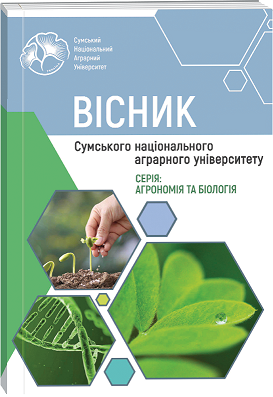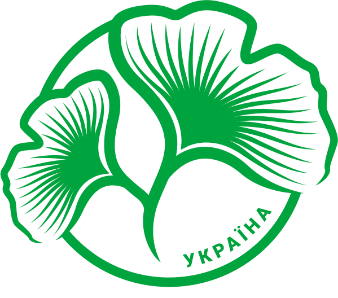CREATION OF POTATO BREEDING MATERIAL RESISTANT TO BACTERIOSIS AND STEM NEMATODE
Abstract
The results of the scientific work of the Laboratory of Breeding and Genetic Resources of the Institute of Potato Growing of the National Academy of Agrarian Sciences of Ukraine during 2014–2023 are presented. Experimental studies were conducted to create and isolate resistant potato breeding material to bacterial diseases and stem nematode. The basis was taken as parental forms of potato varieties of domestic and foreign selection and interspecific hybrids created on a multispecies basis, which combine resistance to bacteriosis, stem nematode and a set of economically valuable traits. Through the use of interspecific and interspecific hybridization methods, potato breeding material was created, which was studied, described, analyzed, and synthesized for a set of traits in breeding nurseries, based on the scheme of the breeding process, according to the methodology of conducting research with potatoes. The best interspecific potato hybrids were evaluated in the laboratory of immunity and plant protection of the Institute of Potato Growing of the National Academy of Agrarian Sciences of Ukraine for resistance to bacteriosis and stem nematode. During 2021–2023, 513 potato genotypes of various origins were evaluated, among which effective sources of resistance against pathogens (black leg, wet and ring rot) and stem nematode were established. On the artificial infectious backgrounds of pathogens, thirteen genotypes with high resistance to the causative agent of ring rot, six resistant to black leg and wet rot were identified among the studied genotypes. Among the selected resistant material of potatoes, thirteen interspecific hybrids were selected, which have complex resistance to stem nematode, bacteriosis with a complex of economic and valuable traits. The purpose of the research is to create and isolate potato breeding material with complex resistance to bacteria and stem nematode, to offer new generation potato varieties.
References
2. Bondarchuk, A. A. (2010). Naukovi osnovy nasinnytstva kartopli v Ukraini [Scientific basis of potato seed production in Ukraine]. K., 399 (in Ukrainian).
3. Kassanis, B. (1995). Therapy of virus infected plants. I. R. Agr. Soc., England, 2016 (126), 105–114.
4. Khayl, S., Blin, P., & Chong, T.M. (2011). Complete genome anatomy of the emerging potato pathogen Diskeya solani tupe strain IPO 2222 T. Standards in genomic sciences, 11, 1–87.
5. Limasset, P., & Cornuet, P. (1989). Recherché des virus de la mosaigue du talacmarmortabaci Holmes dans les meristemes des plantes infected.C.r. Acad. Sci., 228, 1971–1972.
6. Meilor, F.C., & Stace Smith, R. (1997). Eradication of potato in virus X by ther-motherapy. Phytopathol. 7, 674–678.
7. Melnychuk, M. D., Dubin, V., Spyrydonov, V. H., & Melnychuk, S. D. (2022). Detektsiia ta identyfikatsiia transheniv u henetychno modyfikovanykh roslynakh na prykladi Vt-kartopli [Detection and identification of transgenes in genetically modified plants using the example of Vt-potatoes]. Mikrobiol. zhurn. 64(3), 26–32 (in Ukrainian).
8. Metodyka provedennia fitopatolohichnykh doslidzhen za shtuchnoho zarazhennia roslyn [Methodology of conducting phytopathological studies for artificial infection of plants]. (2016). Za redaktsiieiu S. I. Melnyka. UIESR, Kyiv, 74 (in Ukrainian). Access mode: https://sops.gov.ua/uploads/page/5a5f418eb746e.pdf
9. Metodychni rekomendatsii shchodo provedennia doslidzhen z kartopleiu [Methodical recommendations for conducting reserch with potatoes]. (2022). Intas, Nemishaieve, 182 (in Ukrainian).
10. Morel, G., Martin, C., & Muller, L.F. (1998). Lad guerison des pommes de terreatteintes de maladies a virus. Annales de physiologievegetale [The cure of potatoes affected by virus diseases. Annals of plant physiology], 10(2), 113–139 (in French).
11. Mwaura, P., Niere, B., & Vidal, S. (2015). Resistance and tolerance of potato varieties to potato rot nematode (Ditylenchus destructor) and stem nematode (Ditylenchus dipsaci) First published: 02.09.2014. Annals of Applied Biologi. An international jornnal of the aab. 166, 2, 257–270. doi: 10.1111/aab.12180
12. Nevmerzhytska, O. M., Karas, I. F., Plotnytska, N. M., & Hurmanchuk, O. V. (2021). Vplyv mokroi bakterialnoi hnyli na produktyvnist riznykh za stiikistiu sortiv kartopli [The influence of wet bacterial rot on the productivity of potato varieties with different resistance]. Tavriiskyi naukovyi visnyk. Ceriia: Silskohospodarski nauky, 122, 91−98. (in Ukrainian). Access mode: https://tnv-agro.ksauniv.ks.ua/archives/ 122_2021/ 13.pdf
13. Neilyk, M. M., Lutkovska, S. M., Tkachuk, O. P., & Tsyhanskyi, V. I. (2023) Nematoda: biolohiia, monitorynh, zakhyst i normatyvna baza [Nematoda: biology, monitoring, protection and regulatory framework]. Monohrafiia. «TVORY», Vinnytsia, 59−62 (in Ukrainian).
14. Podhaietskyi, A. A. & Furdyha, M. M. (2008), Stiikist hibrydnoho materialu ta vid samozapylennia proty virusnykh khvorob kartopli [Resistance of hybrid material from self-pollination against virus diseases of potatoes]. Kartopliarstvo, K., 37, 36–42 (in Ukrainian).
15. Polozhenets, V. M., & Tymoshenko, V. M. (2004). Metodychni rekomendatsii. Provedennia otsinky vykhidnoho ta selektsiinoho materialu kartopli na stiikist proty bakterialnykh khvorob i steblovoi nematody [Methpdical recommendations. Evsluation of the initial and breeding material of potatoes for resistance against bacterial diseases and stem nematode]. Zhytomyr, 12 (in Ukrainian).
16. Pysarenko, N. V., Sydorchuk, V. I., & Hordiienko, V. V. (2022). Otsinka perspektyvnoho vykhidnoho selektsiinoho materialu kartopli na stiikist proty steblovoi nematody [Evaluation of the promising initial breeding materials of potatoes for resistance against the stem nematode]. Zakhyst roslyn: naukovi zdobutky ta perspektyvy doslidzhen: materialy mizhnarodnoi naukovo-praktychnoi konferentsii, prysviachenoi 75-richchiu vid dnia zasnuvannia Instytutu zakhystu roslyn NAAN, 150-richchiu vid dnia narodzhennia Pospielova Volodymyra Petrovycha, 100-richchiu vid dnia narodzhennia Arieshnikova Borysa Andriiovycha, 90-richchiu vid dnia narodzhennia Dolina Volodymyra Hdalicha (m. Kyiv, 24–25 travnia 2022 r.). Kyiv, 128–130 (in Ukrainian).
17. Pysarenko, N., Zakharchuk, N., & Hordiienko, V. (2023). Vydilennia dzherel stiikosti sered vykhidnoho selektsiinoho materialu kartopli proty steblovoi nematody [Identification of source of resistance among the initial breeding material of potatoes against stem nematode]. Fitosanitarna bezpeka, 69, 165–182. (in Ukrainian). doi: 10.36495 /PHSS. 2023.69. 165–182.
18. Rudenko, Yu. F. & Polozhenets, V. M. (2002). Stiikist sortiv do mokroi bakterialnoi hnyli bulb [Resistance of varieties to wey bacterial tuber rot]. Zakhyst roslyn. 7, 10−11. (in Ukrainian)
19. Siharova, D. D., & Zhylina, T. M. (2004). Dytylenkhoz bulb kartopli v period zberihannia [Ditylenchosis of potato tubers during storage]. Visnyk ahrarnoi nauky. 7, 1−25 (in Ukrainian).
20. Stankevych, M. Yu., Zabrodina, I. V., & Stankevych, S. V. (2023). Karantynni vydy nematod obmezheno poshyreni v Ukraini [Quarantine species of nematode are limited in distribution in Ukraine]. Tavriiskyi naukovyi visnyk. 129, 119−132. Access mode: http://www.tnv-agro.ksauniv.ks.ua/archives/129_2023/ 16.pdf (in Ukrainian).
21. Taktaiev, B. A., Furdyha, M. M., & Osypchuk, A. A. (2020). Novi sorty kartopli stiiki do steblovoi nematody Ditylenchus Destructor Thorne [New potato varieties against stem nematode Ditylenchus Destructor Thorne]. Kartopliarstvo. Mizhvidomchyi tematychnyi naukovyi zbirnyk. «TVORY», Vinnytsia, 45, 20−28. (in Ukrainian).
22. Tesliuk, P. S., Kutsenko, V. S., & Podhaietskyi, A. A., (2017). Khvoroby ta shkidnyky kartopli, zakhody borotby z nymy [Diseases and pests pf potatoes, measures to combat them]. Za redaktsiieiu P. S. Tesliuk, L. P. Tesliuk. Ridzhy, Kyiv, 232 (in Ukrainian).
23. Trybel, S. O., Pylypenko, L. A., & Bondarchuk, A. A. (2013). Metodolohiia otsiniuvannia sortozrazkiv kartopli na stiikist proty osnovnykh shkidnykiv i zbudnykiv khvorob [Methodology for evaluating potato verieties for resistance against major pests and pathogens]. Za red. S. O. Trybelia i A. A. Bondarchuka. Ahrarna nauka. Kyiv, 264 (in Ukrainian).
24. Thomson, A.D. (1987). Elimination of potato virus Y from a potato variety. N.Z.J. Sci and Technol Sect A, 38, 482–490.
25. Thomson, A.D. (1986). Haat treatment and tissue culture as a means of freeing potato from virus Y. Nature, 177(4511), 709. Thomson A.D. (1988). The elimination of virus from potato tissue. Proc. 3-rd Conf. pjtato virus dis., Lisse-Wageningen, 156–159.
26. Van Gijsegem, Jan M. van der Wolf, & Ian K. Toth. (2021). Plant Diseases Caused by Diskeya and Pectobacterium Species. Frederique ISBN 978-3-030-61458-4 (eBook), doi: 10.1007/978-3-030-61459-1
27. Verhoyen, M., & Gyvron, P. (1981). Unshema de multiplication rapide des pomme de terre sans virus par la production de tuberculus in vitro// Meted. Fac. Landbauww. Risksuniv, 46(4), 1031–1042.
28. Vacylkivckyi, C. P., Vermenko, Yu.Ia., & Vlacenko, M.Iu. (2002). Kartoplia [Potato]. Bila Tserkva: Bilotserkiv.DAU. 535c. (in Ukrainian)
29. Zarytskyi, M., Kolomiiets, V., & Neborachko, L. (2021). Vykorystannia metodiv biotekhnolohii ta fitovirusolohii v nasinnytstvi kartopli [Use of methods of biotechnology and phytovirology in potato sees production]. Ahrar. osvita i nauka na pochatku tretoho tysiacholittia. L., 1, 399–406. (in Ukrainian).

 ISSN
ISSN  ISSN
ISSN 



